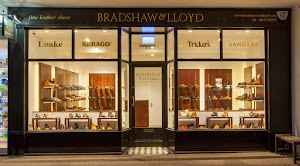The leather manufacturing process is divided into three fundamental sub-processes: preparatory stages, tanning and crusting. All true leathers will undergo these sub-processes. A further sub-process, surface coating, can be added into the leather process sequence but not all leathers receive surface treatment. Since many types of leather exist, it is difficult to create a list of operations that all leathers must undergo.
The preparatory stages are when the hide/skin is prepared for tanning. Preparatory stages may include: preservation, soaking, liming, unhairing, fleshing, splitting, reliming, deliming, bating, degreasing, frizing, bleaching, pickling and depickling.
Tanning is the process which converts the protein of the raw hide or skin into a stable material which will not putrefy and is suitable for a wide variety of end applications. The principal difference between raw hides and tanned hides is that raw hides dry out to form a hard inflexible material that when re-wetted (or wetted back) putrefy, while tanned material dries out to a flexible form that does not become putrid when wetted back. Many different tanning methods and materials can be used; the choice is ultimately dependent on the end application of the leather. The most commonly used tanning material is chromium, which leaves the leather, once tanned, a pale blue color (due to the chromium); this product is commonly called “wet blue”. The hides once they have finished pickling will typically be between pH 2.8 and 3.2.[citation needed] At this point, the hides would be loaded in a drum and immersed in a float containing the tanning liquor. The hides are allowed to soak (while the drum slowly rotates about its axle) and the tanning liquor slowly penetrates through the full substance of the hide. Regular checks will be made to see the penetration by cutting the cross-section of a hide and observing the degree of penetration. Once a good, even degree of penetration exists, the pH of the float is slowly raised in a process called basification. This basification process fixes the tanning material to the leather and the more tanning material fixed, the higher the hydrothermal stability and increased shrinkage temperature resistance of the leather. The pH of the leather when chrome tanned would typically finish somewhere between 3.8 and 4.2.
Crusting is when the hide/skin is thinned, retanned and lubricated. Often, a coloring operation is included in the crusting subprocess. The chemicals added during crusting have to be fixed in place. The culmination of the crusting subprocess is the drying and softening operations. Crusting may include the following operations: wetting back, sammying, splitting, shaving, rechroming, neutralization, retanning, dyeing, fatliquoring, filling, stuffing, stripping, whitening, fixating, setting, drying, conditioning, milling, staking, and buffing.
For some leathers, a surface coating is applied. Tanners refer to this as finishing. Finishing operations may include: oiling, brushing, padding, impregnation, buffing, spraying, roller coating, curtain coating, polishing, plating, embossing, ironing, ironing/combing (for hair-on), glazing and tumbling.
These processes are left to specialists in the Northamptonshire shoe industry. Shoe makers such as Loake shoes, Sanders shoes, Trickers shoes and Sebago shoes will instruct tanneries as to the specification of the leathers required for their shoes and buy in required quantities. This enables them to concentrate on what they specialize in – making footwear which you can view at Bradshaw and Lloyd’s website: www.bradshawandlloyd.com.


